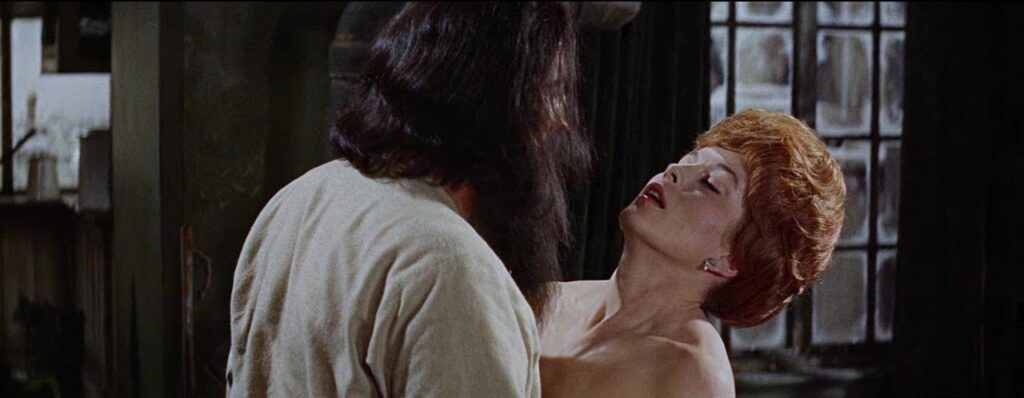
Shot on the same sets and at the same time as The Reptile (1966) and Dracula: Prince Of Darkness (1966), Rasputin the Mad Monk (1966) is a relatively low budget affair even by Hammer Studios’ standards. Regardless of its limitations, Christopher Lee has said that Maria Rasputin considered Lee’s portrayal of the infamous Russian Holy man the most like her father to ever grace the silver screen. This reiterates the role that actors like Christopher Lee played in elevating Hammer Horror films from low budget exploitation flicks to art.
Director Don Sharp and screenwriter Anthony Hinds reimagine Rasputin as a kind of gentleman monster akin to Dracula. They play it fast and loose with regards to the history of the latter day Romanov regime, opting to retell the tale in the vein of a monster movie. Fidelity to history is an after thought as Rasputin The Mad Monk focuses instead on the supernatural powers that the titular character supposedly possessed.
The Rasputin of Hammer’s film isn’t the conniving political player or lunatic theologian of Klimov’s Agony (1981), he is instead a beast of demonic appetites. Of course Christopher Lee plays the “mad monk of Russia” as human, but the screenplay and Sharp’s camera say otherwise, creating a contradiction that actually helps to keep the viewer engaged. The scenes of seduction with Lee and Barbara Shelley and Suzan Farmer mirror almost exactly scenes from Lee’s more famous Dracula outings. But Lee’s performance adds an element of a more real danger to Rasputin The Mad Monk because these women aren’t the prey of a legendary vampire but rather the prey of an all too real human being.
Hammer was apparently so confident in their rebranding of Rasputin as a monster like The Mummy, Dracula or the Wolfman that they gave out free Rasputin beards at screenings of Rasputin The Mad Monk. These beards filled the same role as Halloween masks; selling the picture while also canonizing Rasputin as a marketable monster for the studio.
Rasputin The Mad Monk is all kitsch through and through. Of the triptych of films that Hammer Studios shot simultaneously, Rasputin The Mad Monk is the weakest link. The claustrophobic sets impede the scope of history essential to the Rasputin narrative while the rushed shooting schedule ensures only the most mediocre performances from the supporting players. The appeal of Rasputin The Mad Monk is to Christopher Lee fans and people who fancy free beards.
